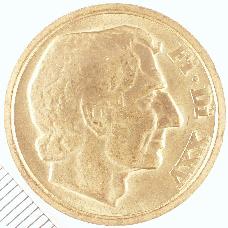
|
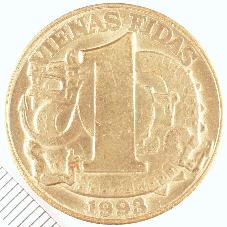
|
archive also available
| Chicago Coin Club | |
|---|---|
| Volume 51 No. 9 | September 2005 |
Here is a reminder that the members' auction will be held during our November 10 meeting. The next issue will give many details, but now is the time to think about making consignments. Due to the varied interests of the members, and realizing that at least two bidders are needed to make an auction, some items do better than others. In the past, items generating the most interest were either related to our club or the Chicago area. Again this year, Bill Burd of Chicago Coin Company has agreed to receive items from members unable to attend the meeting. Please send me a list of items as soon as possible; those lists received by mid-October will be included in the November Chatter which will be mailed at least one week before the auction.
Paul Hybert, editor
The 1040th meeting of the Chicago Coin Club was called to order at 7:00 PM by President Robert Feiler with 14 members present. The July Minutes as published in the Chatter were approved. Treasurer Steven Zitowsky reported zero dollars in receipts and disbursements during July.
Under correspondence, the Secretary read an e-mail from Donn Pearlman resigning from the Club due to his move to Las Vegas. Considering his donation of numismatic books before leaving Chicago, a motion was made and passed that his membership be considered paid through 2005. The Secretary reported material donated by the Marcella Sheldon estate was sold at a George Frederick Kolbe sale for $740.00 minus commission. A check of $592.00 was presented to the Club. There were three lots that didn’t sell. The upcoming Illinois Numismatic Association convention was announced, September 9-11, Park Place Banquet Hall, 6200 Joliet Road, Countryside, IL. There will be a Boy Scout Merit Badge Clinic during the morning. The afternoon will have three speakers. Club members John Wright will speak at 2 PM 238AD – The Year of the Seven Caesars, and John Riley speaks at 4 PM World War II Remembered Through Coins & Paper Money.
During a discussion about the recently held American Numismatic Association in San Francisco, members felt it was a strong buyer’s show because of the low attendance and possible lack of European buyers. Robert Leonard reported selling $48.00 in club souvenir cards issued for the Chicago International Coin Fair. Steve Huber reported Andy Lustig from R.M. Smyth is prepared to deliver a presentation before the Club at an upcoming coin show.
The evening’s featured speaker was Andy Plioplys on Temporary Currencies of Lithuania. He showed many pieces issued under the various years of independence, plus the years Lithuania was under German, Polish and Russian occupation. Some of the more interesting pieces included currency (coupons) issued by the Singer Sewing Machine Company in late 1920s, separate notes issued during World War II by Germany for buying potatoes or sugar, a coupon issued by the University of Vilnius used to pay cab drivers who in turn used it to buy gasoline, and a coin struck by the Laser Physics Department of the University of Vilnius used by staff for a free lunch in the school cafeteria. Other unique pieces included a series of currency issued by a Lithuanian city good for only one day (December 2, 1989) as a local political protest against Russian occupation, currency issued in 1990 by Lithuanian companies to pay employees so they could buy goods in the company store because the country was experiencing shortages resulting from Russian economic blockade, the temporary currencies issued by the independent Lithuanian government during the years 1991-93, and the currency issued by a city with the Bank of Lithuania but good for only one week in 1991 to raise funds for Lithuanian Olympic activity.
Exhibitors were Mark Wieclaw: old Gray Sheets from 1980 showing gold prices increasing $108.00/ounce in one week and decreasing $190.00/ounce the next week, a silver denarius of Roman Emperor Otho from 69 AD, a billon tetradrachm struck 238 AD of Gordian I Africanus who ruled only 21 days, a slabbed 1921 Peace dollar and a 2005 $50 U.S. gold eagle; Don Dool: City of Kaufbeuren, Stadt, 1622, Kreuzer, from the City of Strasborg an 1814 un decime of Napoleon and an 1815 un decime of Louis XVIII, plus the book History of Banco de la Provincia de Buenos Aires, 1822-1997; Robert Feiler: Greek stater 390-380 BC showing Pegasus on obverse, Roman Republic denarius struck 86 BC with laureate head of Apollo, an obsolete bank note dated July 11, 1840 from the Bank of Cairo, Illinois; Andy Plioplys: first Lithuanian stock certificates, post U.S.S.R.; Steve Huber: 9 crowns: from 1590 & 1621 Transylvania, 1698 Nurenberg, 1813 Fribourg, 1911 & 1914 China, 1936 (2) Philippine Islands, and 1914 Mexican Revolution; Robert Leonard: Memorabilia from the ANA San Francisco convention, 2 cut halves from 1913 Chinese 200 Cash coins making them worth 100 Cash, a book Cobs, Pieces of Eight and Treasure Coins, by Sewall Menzel; Chuck Jacobs: 7 different coins from the Culion leper colony in the Philippines dated from 1913-1930, book Coins, Medals and Tokens of the Philippines, 1728-1974 by Aldo P. Basso.
Chuck Jacobs announced he has accepted new job in Ohio and regrettably won’t be traveling to Chicago on a weekly basis. Everyone wished him well and gave him a round of applause. Don Dool reported member Mike Metras is back in the area and finalizing his affairs before moving permanently to Germany. A motion was made and passed to reserve a room for the December 14th Annual Banquet to be held at Marcello’s Restaurant, 645 W. North Avenue, Chicago, IL 60610. Details will be reported at the September meeting. Some members are planning to frame the Club medals received for exhibiting and speaking, and a motion was made and passed authorizing the Secretary to sell them a Club speaker’s medal after canceling the side normally engraved. This would allow them to show the medal’s die struck side in the shadow box.
The meeting was adjourned at 9:25 PM.
Respectfully submitted, Carl Wolf
Secretary
Presented by Andy Plioplys to our August 10, 2005 meeting.
Andy started his presentation with the warning that his definition of temporary banknotes is very broad and that it might not match some others' idea of the material. Much of Lithuania's history of recent centuries has been under political duress, and the pieces Andy showed us demonstrate peoples' ability to meet necessity with inventiveness and adaptibility.
At one time in the Middle Ages, Poland and Lithuania formed one empire (some viewed Lithuania as a province of Poland), but it was under Russian and Prussian control by the late 18th century. A 1794 revolt, led by Thaddeus Kosciuszko among others, led to a joint Polish Lithuanian currency. Andy showed 4 and 25 zloty pieces, and mentioned that other denominations are known. Czarist Russia controlled Lithuania after the revolt failed.
Andy's next piece was an example of small money. It was used by beggars in the capital, Vilnius, during 1904 and 1905. Restaurants accepted it for payment; signed by the patron receiving food, the restaurant kept one part and submitted the other part to the government for re-imbursement. With such specialized pieces, sometimes the story of how they came to the collector's market are as interesting as their original story. In this case, much material was either given away or destroyed when an archive was torn down: old books, boxes of stuff, and other things we like to collect.
Next shown were 10 and 20 kopeck revenue stamps showing a cart with horses. Acquired in 1983 from Frank Pasek, these 1912 items were used in the Jewish ghetto to raise funds. Later, they were used in the ghetto as money.
The German occupation during the war years of 1914-1918 resulted in many types of pieces. Some local magistrates signed local pieces; German occupiers issued some pieces denominated in kopecks and rubles, with legends in German, Lithuanian, Latvian, and Polish; a specialist could spend much time with the many errors in the Polish part.
Lithuania declared independenc in February, 1918 and was recognized by Germany. Various mark-denominated notes were printed in Berlin, with one ost-mark equal to one German mark. One side features German legends, while the other side has Latvian, Lithuanian, and German. (Half-mark pieces are known, as are 1, 2, 5, 20, 50, 100, and 1000 mark pieces.) During that time, some cities issued local currencies.
Conditions became more unsettled following the end of WW I; Poland invaded in April, 1919. The central bank in Vilnius issued notes in 1, 5, 10, and 20 marks in January, 1920, but the printer and quantity are unknown. A few months later, Polish forces took Vilnius but did not issue notes. By 1923, Lithuanian forces had moved into Memel, bringing an end to a large issue of low denomination notes (beautiful examples of local currencies, but toward the end was just so much Notgeld). The establishment of the Bank of Lithuania was hurried along to separate Lithuania from the hyper-inflation in Germany; Lithuanian notes in local denominations of centas and litas appeared in August, 1922.
The Singer Sewing Machine Company produced small pieces in the late 1920s and into the 1930s; most printing in English except for the denomitaion in litas. At first, Andy did not know how they were used; as coupons? or as small change? It turns out that the sewing machines were sold on a time payment plan; pay some amount every week, and approipriate stamps are placed into a receipt book. The final clue was determining that the script writing commonly appearing on them was week 24, week 33, etc. These are most commonly found in strips of three 1 litas stamps, showing that the most common payment was 3 litas per week.
The German occupation of 1943-1945 resulted in notes of different series and expiration dates. They listed what could be bought with each, and how much. Denominated in 1, 5, and 10 punkt (German for point), these are currency sized. No other currency was issued, so are these currency or a ration coupon?
Andy is skeptical of the story about 1 kilometer denominated Soviet pieces from 1979. Supposedly issued by the University of Vilnius to its employees when it was short of money; it was good for a distance in a taxi, and the university would give gasoline to the taxi drivers in exchange for the pieces.
Lithuania declared independence in 1990, and the following few years saw much economic disruption with many odd pieces. Some companies issued pieces good in the company store for their own products, and their employees would barter those items for what they wanted. Some local issues with nice pictures were issued as a prelude to the issuance of official currency in 1993. Andy even showed counterfeits of the pieces. And then there are the later local souvenir issues raising money for local improvements. Some such fantasy pieces are still be printed and offered on eBay. Very confusing and unofficial there at the end, much more than can be covered in this little article.
Andy concluded by showing a coin issued as a paycheck supplement in 1993 by the Laser Section of the Physics Department at the University of Vilnius; it was good in the cafeteria for a meal.

|

|
Items shown at our August 10, 2005 meeting.
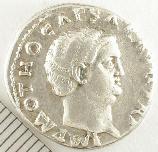
|
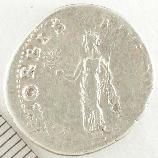
|

|
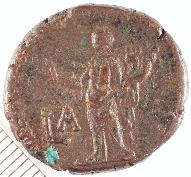
|
John Riley reports:
This year's ANA show and bourse did not strike me as
being particularly large in contrast to past
conventions - perhaps that had something to do with
the 11th-hour location change from San Jose.
What a beautiful venue San Francisco is, though!
I didn't have time to take tours of the old S.F.
mint or go to Alcatraz Island, but a lot of effort
was obviously made by the host clubs to facilitate
after-hours activities.
The Chicago Coin Club was well represented there:
Tom DeLorey and many the Berk's staff, Alex Basok,
and even Bob Leonard was seen "working the floor!"
It is interesting to me to see how popular paper money has become and the emphasis placed on that field these days. Most, if not all, dealers had a selection.
A touching moment of silence was held on Friday morning for Art Kagin.
The intent of my trip, and by far the most rewarding, was the Philippine Collectors Forum (PCF) chaired by Ray Czahor from Columbia, Maryland, on Friday afternoon. Watch for Doug Andrews upcoming article in World Coin News. This has become a tight-knit group over the past few years that promotes what we consider to be an under-appreciated aspect of U.S. numismatics: coins, paper money & exonumia of the Philippine Islands under U.S. administration (1903-45). A speaker from the Old Manila Mint Museum came in for the meeting and a delightful dinner followed.
Try for Denver next year and definitely Milwaukee the year after!
Tom DeLorey reports:
Flying to San Francisco the day after Chicago hit 104 degrees, my first impression of the 2005 ANA was noticing that the limo starter at San Francisco International Airport was wearing a winter coat. It was a gorgeous 70 degrees.
The show was held at the Moscone Convention Center on the South edge of the downtown area. As ANA sites go it was slightly better than average, if only because it had two good food areas that served a decent latte. I stayed at a tiny hotel two blocks away, across the street from the "Granite Lady" Old San Francisco Mint. I never got the chance to take one of the tours of it, but former Mint Director Jay Johnson took my picture standing in front of it.
Many people were put off by the fact that the registration booths were on the second level, along with the ANA booths, the exhibit area and the foreign mint booths. I heard from one person that the foreign mints were unhappy at being isolated from the main bourse area, and yet other people said that the second floor registration worked to their advantage.
Supposedly many locals heard about a coin show, came in, registered, looked at the exhibits and the foreign mint booths, and left without ever entering the bourse. This could explain why the high official attendance (the P.A. kept calling for volunteers to help out at the registration booth) was not reflected in the number of warm bodies on the bourse floor.
The exhibits were excellent, as always. Besides the now-mandatory 1913 Liberty Head nickel, there was the 1870-S $3 gold which I haven't seen in a long time, the 1870-S Half Dime (which has improved from an AU-58 to an MS-64 since the first time I saw it), and an 1870-S Seated Dollar.
Despite the lower number of people on the bourse floor, retail sales were better than average for an ANA convention. One Oriental gentleman started out with a $3 gold, which got him over the $1000 minimum needed to qualify for an exemption from the California sales tax law, and then added several other $50-$250 coins. Had he bought any of these by themselves from another dealer, he would have had to pay sales tax on the single sales.
The tax situation was maddening. I lost one $800 sale because I was going to charge sales tax, after discounting the coin from $900. The buyer expected me to pay the tax myself. Another buyer picked out a $600 coin, and when I suggested that he buy an official State of California one ounce gold piece for $10 over melt to put him over the $1000 exemption limit, he said he didn't want one, but went ahead and picked out another $400+ in single coins just to avoid the tax. You just did not know where you stood on any given transaction.
The restaurants were good. I took a cable car ride with my old friend David T. Alexander of Stack's so we could eat up at Fisherman's Wharf, and an exciting taxi ride back with a driver who thought we were reshooting Bullitt. I'd go back.
| Date: | September 14, 2005 |
| Time: | 7:00 PM |
| Location: | Downtown Chicago
At Dearborn Center, 131 S. Dearborn, 6th Floor, Conference Room 6A (right off the elevator lobby). Please remember the security measures at our meeting building: give a club officer the names of all your guests prior to the meeting day; and everyone must show their photo-ID and register at the guard's desk. |
| Featured speaker: | - to be announced |
|
| |
| September | 8-11 | Illinois Numismatic Association Fall Coin Show & Convention at the Park Place of Countryside Banquet Hall, 6200 Joliet Road, Countryside, IL. Friday & Saturday 10 AM - 6 PM; Sunday 10 AM - 3:30 PM. Take I55 to LaGrange Road, Exit 279 North, go 1.2 miles then turn left on Joliet Road, go about two blocks. The hall is the tall black building. Entrance is in the rear. Free parking for 700 cars. |
| September | 14 | CCC Meeting - Featured Speaker - to be announced |
| October | 12 | CCC Meeting - Featured Speaker - David MacDonald on Overstruck Ancient Greek Coinage |
| October | 13 | Bernard L. Schwartz | 1986 |
| October | 14 | Joel J. Reznick | 1981 |
| October | 14 | Warren G. Schultz | |
| October | 17 | Margo Russell |
All correspondence pertaining to Club matters
should be addressed to the Secretary and mailed to:
CHICAGO COIN CLUB
P.O. Box 2301
CHICAGO, IL 60690
http://www.ChicagoCoinClub.org/
prhybert@worldnet.att.net
| Robert Feiler | - President |
| Jeff Rosinia | - First Vice President |
| Lyle Daly | - Second Vice President |
| Directors: | Phil Carrigan
Carl Wolf Steve Zitowsky Mark Wieclaw |
| Other positions held are: | |
| Bill Burd/Carl Wolf | - Secretary |
| Steve Zitowsky | - Treasurer |
| Paul Hybert | - Chatter Editor |
| William Burd | - Archivist |